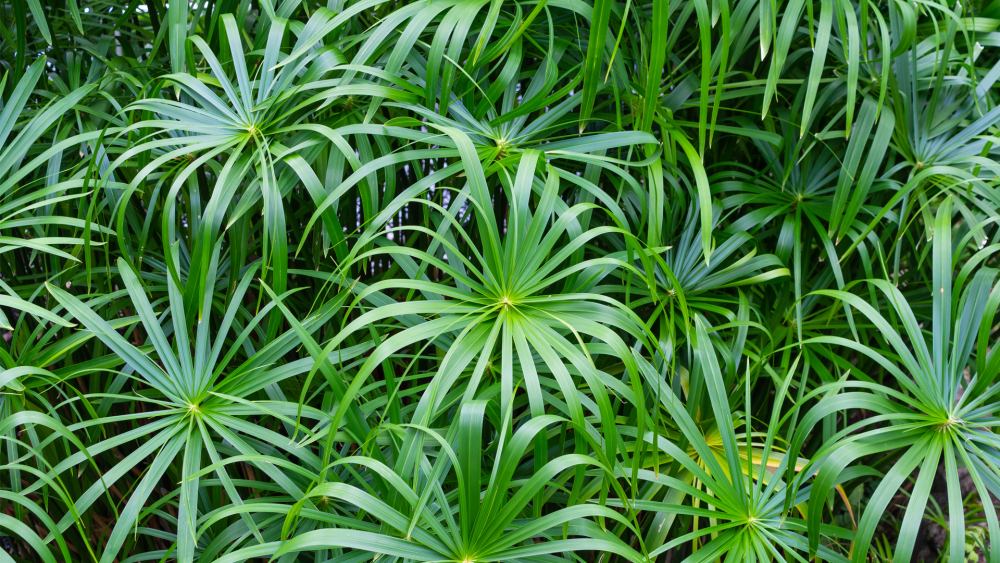
If you're looking for a tropical, architectural houseplant that thrives where others might struggle—especially in wet conditions—then Cyperus alternifolius, also known as the Umbrella Plant or Umbrella Palm, might be your perfect match. Native to Madagascar, this plant gets its name from its unique umbrella-like whorls of narrow leaves that fan out from the tops of tall, reed-like stems.
Often grown as a water garden plant outdoors, Cyperus alternifolius also makes a stunning and unique houseplant, especially in bright kitchens, bathrooms, or sunrooms where humidity is high and light is abundant.
Cyperus alternifolius loves bright, indirect light and will also tolerate some direct sun—especially morning sun. For best growth, place it near an east or south-facing window where it can soak in plenty of light.
While it can survive in medium light conditions, its growth will slow and it may become leggy over time.
This plant is semi-aquatic, which means it actually prefers constantly moist or even wet soil. Unlike most houseplants, you cannot overwater a Cyperus alternifolius—in fact, underwatering is more likely to be the problem.
Keep the pot standing in a saucer or tray of water at all times, especially during the growing season. If allowed to dry out, the plant will quickly show signs of distress such as browning or drooping leaves.
As a tropical species, Umbrella Plant enjoys high humidity. It’s a great candidate for humid rooms like bathrooms or kitchens. You can also increase humidity with a humidifier, misting, or grouping it with other moisture-loving plants.
It thrives in normal indoor temperatures between 65–80°F (18–27°C), but avoid cold drafts or temperatures below 50°F (10°C).
Use a rich, moisture-retentive soil mix, such as a blend of peat moss and loam with added perlite. If you're keeping the pot in standing water, regular potting mix will do fine, as drainage is less critical.
Repot every 1–2 years, especially if the plant becomes root-bound or you notice reduced growth.
Feed your Umbrella Plant every 4–6 weeks during the spring and summer with a diluted balanced liquid fertilizer. Because it grows quickly and has a lot of leafy foliage, regular feeding will keep it lush and green.
Reduce or stop fertilizing in the fall and winter when the plant’s growth naturally slows.
Remove yellowing or dried leaves at the base to keep the plant tidy. If it becomes too tall or leggy, you can trim the stems at the soil line—new shoots will quickly take their place.
If the plant outgrows its space, consider dividing it during repotting by gently separating clumps and replanting them into separate containers.
Cyperus alternifolius is easy to propagate through division or from cuttings:
This quirky upside-down propagation method is a fun experiment and often successful!
Cyperus alternifolius is considered non-toxic to pets, making it a great choice for homes with curious cats or dogs.